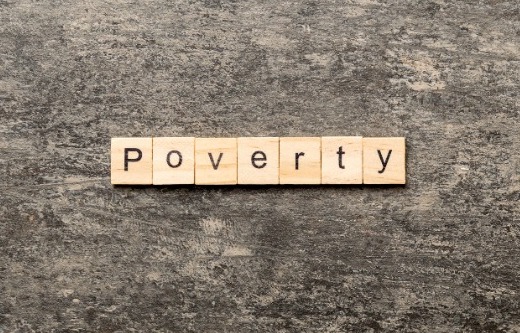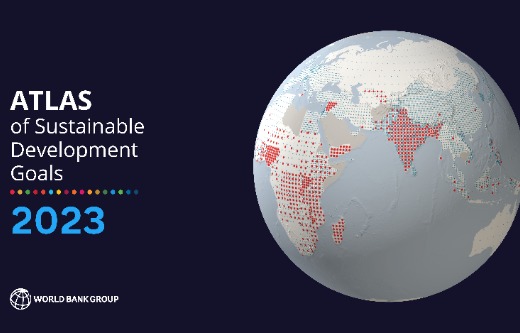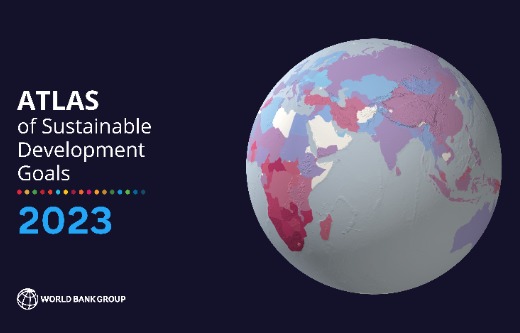Overview
National governments and their development partners are all working to reduce poverty. Although it is often thought of as a lack of material resources, poverty is correlated closely with all aspects of a person’s life: the world’s poor are more likely to be malnourished, they have less access to services like education, electricity, sanitation and healthcare, and they are more vulnerable to conflict and climate change. Understanding poverty is thus fundamental to understanding how societies can progress.
Reducing poverty and inequality are central to the UN’s Sustainable Development Goals (SDGs) and the World Bank Group’s mission: ending extreme poverty and boosting shared prosperity on a livable planet. National statistical systems, household surveys and poverty measurement methodologies are at the heart of tracking these global goals.
Reducing poverty
How poverty is defined and measured varies across the world. The national poverty line for a country is typically a monetary threshold below which a person's minimum needs cannot be met, taking into account the country's economic and social circumstances. Poverty lines not only vary widely by country but they are also often revised as countries develop: richer countries typically have higher poverty lines than poorer ones. Governments track how many people are living on less than the national poverty line so that they can monitor their development progress. The national poverty line is also a central indicator for SDG 1, ending poverty "in all its forms."
To aggregate and compare poverty rates across countries, poverty thresholds that reflect the same real standard of living in each country are used. The $3.00 a day poverty line, which reflects the value of the typical national poverty line in the poorest countries, is often referred to as the international poverty line. For added perspective, the World Bank also tracks poverty at $4.20 a day, the typical line for lower-middle-income countries, and $8.30 a day, typical for upper-middle-income countries.
Poverty measured at the international poverty line of $3.00 a day is used to track progress toward meeting the World Bank target of reducing the share of people living in extreme poverty to less than 3 percent by 2030. SDG target 1.1 is even more ambitious: by 2030, it wants all countries, regions, and groups within countries to achieve zero poverty at the extreme poverty line.
Inequality and shared prosperity
As with poverty, there are many ways to measure inequality. The World Development Indicators (WDI) databases present a wide range of inequality indicators such as the Gini index and the share of consumption or income held by each quintile. The measures offer different ways to capture and communicate aspects of the income distribution.
To monitor progress against its goal of boosting shared prosperity, the World Bank tracks two indicators – the Global Prosperity Gap and the number of countries with high inequality. These measures replace the previously used growth in the consumption or income of the poorest 40 percent of the population in a country. The Global Prosperity Gap is a distributionally sensitive and sub-group decomposable measure of well-being useful for tracking progress on SDG 10, which aims to reduce inequality within and across countries.
Featured Indicators
A selection of relevant indicators is presented below. The table shows, for each featured indicator, time coverage per year, for all countries, for each decade since the 1960s, and regional coverage for each World Bank geographical region since 2010. For detailed thematic lists please refer to the World Development Indicators Statistical Tables.
| Poverty rates at national poverty lines | ||||
|---|---|---|---|---|
| Indicator | Code | Time coverage | Region coverage | Get data |
|
Poverty headcount ratio at national poverty lines (% of population)
|
SI.POV.NAHC |






|







|
|
|
Urban poverty headcount ratio at national poverty lines (% of urban population)
|
SI.POV.URHC |






|







|
|
|
Rural poverty headcount ratio at national poverty lines (% of rural population)
|
SI.POV.RUHC |






|







|
|
|
Poverty gap at national poverty lines (%)
|
SI.POV.NAGP |






|







|
|
|
Urban poverty gap at national poverty lines (%)
|
SI.POV.URGP |






|







|
|
|
Rural poverty gap at national poverty lines (%)
|
SI.POV.RUGP |






|







|
|
| Poverty rates at international poverty lines | ||||
| Indicator | Code | Time coverage | Region coverage | Get data |
|
Poverty headcount ratio at $3.00 a day (2021 PPP) (% of population)
|
SI.POV.DDAY |






|







|
|
|
Poverty headcount ratio at $4.20 a day (2021 PPP) (% of population)
|
SI.POV.LMIC |






|







|
|
|
Poverty headcount ratio at $8.30 a day (2021 PPP) (% of population)
|
SI.POV.UMIC |






|







|
|
|
Poverty gap at $3.00 a day (2021 PPP) (%)
|
SI.POV.GAPS |






|







|
|
|
Poverty gap at $4.20 a day (2021 PPP) (%)
|
SI.POV.LMIC.GP |






|







|
|
|
Poverty gap at $8.30 a day (2021 PPP) (%)
|
SI.POV.UMIC.GP |






|







|
|
| Distribution of income or consumption | ||||
| Indicator | Code | Time coverage | Region coverage | Get data |
|
GINI index (World Bank estimate)
|
SI.POV.GINI |






|







|
|
|
Income share held by lowest 10%
|
SI.DST.FRST.10 |






|







|
|
|
Income share held by lowest 20%
|
SI.DST.FRST.20 |






|







|
|
|
Income share held by second 20%
|
SI.DST.02ND.20 |






|







|
|
|
Income share held by third 20%
|
SI.DST.03RD.20 |






|







|
|
|
Income share held by fourth 20%
|
SI.DST.04TH.20 |






|







|
|
|
Income share held by highest 20%
|
SI.DST.05TH.20 |






|







|
|
|
Income share held by highest 10%
|
SI.DST.10TH.10 |






|







|
|
| Shared prosperity | ||||
| Indicator | Code | Time coverage | Region coverage | Get data |
|
Annualized average growth rate in per capita real survey mean consumption or income, bottom 40% of population (%)
|
SI.SPR.PC40.ZG |






|







|
|
|
Annualized average growth rate in per capita real survey mean consumption or income, total population (%)
|
SI.SPR.PCAP.ZG |






|







|
|
|
Survey mean consumption or income per capita, bottom 40% of population (2021 PPP $ per day)
|
SI.SPR.PC40 |






|







|
|
|
Survey mean consumption or income per capita, total population (2021 PPP $ per day)
|
SI.SPR.PCAP |






|







|
|
About the data
National poverty lines
The poverty rate at the national poverty line is country-specific. A country may have a single unique national poverty line, separate lines for rural and urban areas, or separate lines for different geographic areas to take into account differences in the cost of living in different areas of the country or differences in diets and consumption baskets. National poverty lines are thus estimates of poverty that are consistent with each country's specific economic and social circumstances. National poverty lines reflect local perceptions of what is needed to be considered not poor. Because the perceived boundary between poor and nonpoor typically rises with average income, there is no uniform measure for comparing national poverty rates; but although national poverty lines should not be used for comparing poverty rates between countries, they are the appropriate measure for guiding national poverty reduction strategies and monitoring the results.
Almost all national poverty lines are anchored to the cost of a food basket—what the poor in that country would customarily eat—that provides adequate nutrition for good health and normal activity, plus an allowance for nonfood spending. National poverty lines must be adjusted for inflation to keep them constant in real terms and allow for meaningful comparisons of poverty over time. Because diets and consumption baskets also change over time, countries periodically recalculate their poverty lines based on new survey data.
International poverty lines
The World Bank produced its first global poverty estimates for the World Development Report 1990 on Poverty (World Bank 1990) using household survey data for 22 countries (Ravallion, Datt, and van de Walle 1991). Today there are many more countries that field household income and expenditure surveys and reliable data on price differences across countries is more readily available.
However, there are both conceptual and practical problems in making international comparisons of poverty. Because countries define and measure poverty differently, consistent comparisons can be difficult. National poverty lines tend to have higher purchasing power in rich countries, where standards are more generous, than in poor countries. Measures based on an international poverty line attempt to hold the real value of the poverty line constant across countries, as is done in making comparisons over time within countries. Since the World Development Report 1990, the World Bank has tried to apply a common standard in measuring extreme poverty, anchored to what poverty means in the world's poorest countries.
The income or consumption of people living in different countries can be compared by adjusting for differences in the purchasing power of their currencies. The World Development Report 1990 chose a common $1 a day standard, measured in 1985 international prices, adjusted to local currencies based on purchasing power parity (PPP), because at the time it was typical of the poverty lines in low-income countries. Early editions of the World Development Indicators used PPPs from the Penn World Tables to convert values in local currency to equivalent purchasing power in US dollars. Later editions used the 1993 consumption PPPs produced by the World Bank. International poverty lines were also revised after the release of PPPs through the 2005, 2011, 2017 and 2021 rounds of the International Comparison Program.
The current international poverty line, capturing extreme poverty, is set at $3.00 a day in 2021 PPP terms, which represents the median national poverty line of 23 low-income countries. The $3.00 a day poverty line therefore uses the same standard for extreme poverty—the poverty line typical of some of the poorest countries in the world—updated by the latest information on the cost of basic needs in low income countries (Jolliffe ⓡ al. 2025). PPPs are used to estimate global poverty because they take into account differences between countries in the prices of goods and services. While PPPs offer the most comprehensive comparison of living costs around the world, it is important to bear in mind that PPPs were not designed for making international poverty comparisons, but for comparing aggregates from national accounts.
In addition to the poverty estimate at the $3.00/day international poverty line, global poverty estimates at two additional poverty lines, $4.20/day and $8.30/day (both in 2021 PPPs) are reported. The $4.20 line is typical of lower-middle income countries and $8.30/day is typical of upper- middle-income countries (see Foster ⓡ al. 2025).
The World Bank Development Data and Research Groups together with the Poverty Global Deparment maintain the Poverty and Inequality Platform (PIP), an interactive tool that reports poverty estimates for countries, regions and the world since 1981.
PIP users can obtain poverty estimates for countries and regions at different poverty lines and user-friendly dashboards with graphs of trends in poverty and inequality, supported by country briefs.
Inequality and shared prosperity
Inequality is a broader concept than poverty. It is defined in terms of an entire population, not just the portion below a certain poverty threshold. Most inequality measures do not depend on the mean of the distribution. How income is distributed is measured by the share of income or consumption accruing to different groups within the population ranked by income or consumption levels. Those in the group ranked lowest in personal income receive the smallest shares of total income.
The Gini coefficient is a popular summary measure of the degree of inequality. It is derived from the Lorenz curve, which ranks the population from poorest to richest and shows the cumulative proportion of the population on the horizontal axis and the cumulative proportion of expenditure or income on the vertical axis (Haughton and Khandker 2009).
The Global Prosperity Gap is one of the World Bank’s new measures of shared prosperity (Kraay ⓡ al 2023). Promoting shared prosperity is defined as reducing the global average shortfall in income from a standard of prosperity. The prosperity standard was initially set at $25 (2017 PPP) per day (Kraay ⓡ al 2023) and has been updated to $28 (2021 PPP) per day (Foster ⓡ al. 2025). To illustrate the intuition behind this new measure of shared prosperity, the Prosperity Gap measures the average factor by which everyone’s incomes in a society needs to change to reach a prosperity standard of $28 per day (expressed in 2021 PPP dollars). Poorer individuals contribute more to the Global Prosperity Gap. $28 is roughly the per capita household income at which countries transition from upper-middle-income to high-income status.
This new measure of shared prosperity has several advantages over the previous measure (i.e., growth in consumption of the bottom 40 percent of the population). First, it is a truly distributionally sensitive measure, which emphasizes the well-being of the worst-off. Second, the Global Prosperity Gap is sub-group decomposable and can therefore be disaggregated conveniently into population sub-groups. This property is useful to identify the contribution of each population sub-group to the Global Prosperity Gap and inform policy discussions. Third, it is less demanding of the available survey data in the World Bank’s Poverty and Inequality Platform (PIP) and yet more comprehensive in reporting coverage. The previous measure requires comparable survey data from two periods, limiting the number of countries for which shared prosperity can be reported. However, the Global Prosperity Gap compares all observations available in a year to the prosperity standard, so that the measure is available for all countries with survey data in the Poverty and Inequality Platform from 1981 to 2025.
Data availability
The World Bank's Poverty and Inequality Platform (PIP) draws on income or detailed consumption data from more than 2,400 household surveys in 172 countries. The 2023 estimates of poverty and shared prosperity are based on recent data covering three-quarters of the global population.
Challenges of measuring poverty and inequality remain. The timeliness, frequency, accessibility, quality, and comparability of household surveys are inadequate, particularly in the poorest countries. The availability and quality of poverty monitoring data is low in Small Island Developing States, countries in fragile situations, low-income countries, and even some middle-income countries. The lack of frequent, timely, and comparable data in some countries creates uncertainty about the degree to which poverty has actually been reduced. Although data coverage is improving in most regions, in Sub-Saharan Africa and fragile, conflict-affected, and violent (FCV) countries, coverage is still low and variable. Though improvements in household survey programs for monitoring poverty are urgently needed, institutional, political, and financial obstacles continue to limit data collection, analysis, and public access.
Data quality
Other data quality issues arise in measuring household living standards. Surveys ask detailed questions on sources of income and how it was spent, responses to which must be carefully recorded by trained personnel. Income is difficult to measure accurately, and consumption comes closer to the notion of living standards. Moreover, income can vary over time even if living standards do not. But consumption data are not always available and tend to be more costly to collect. Similar surveys may not be strictly comparable because of differences in timing, sample frames, or the quality and training of enumerators. Comparisons of countries at different levels of development also pose problems because of differences in the relative importance of the consumption of nonmarket goods.
Invariably some sampled households do not participate in surveys because they refuse to do so or because nobody is at home during the interview visit, and households with different incomes may not be equally likely to respond. Richer households tend to be less likely to participate because of the higher opportunity cost of their time or because of privacy concerns. The poorest may also be underrepresented; some are homeless or nomadic and hard to reach in standard household survey designs, and some may be physically or socially isolated and thus less likely to be interviewed. If these issues are not corrected for, they can bias both poverty and inequality measurement (Korinek, Mistiaen, and Ravallion 2007). For more on data quality and comparability, see World Bank (2015, 2017, 2024).
Data sources
National poverty measures are collected from government sources and national statistical offices and coordinated through the World Bank's Global Poverty Working Group. Poverty estimates at international poverty lines are prepared by the World Bank's Development Data and Research Groups together with the Poverty Global Department. The international poverty rates are based on nationally representative primary household surveys conducted by national statistical offices or by firms or organizations supervised by government or international agencies. These same data sources are used for estimating indicators of inequality and shared prosperity reported in the World Bank’s Poverty and Inequality Platform (PIP).


